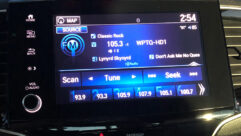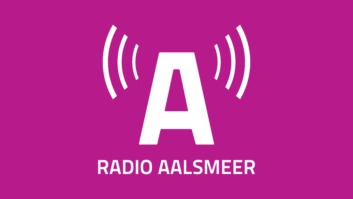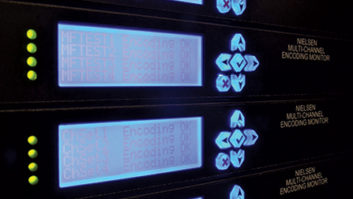2013 Streaming Audio Update
Mar 8, 2013 5:00 PM, By Doug Irwin, CPBE DRB AMD
So it’s 2013 — where’s my flying car? Sometimes it can be useful (and amusing) to go back and look at articles about soon-to-be-used technology, and how they are — in fact — used today. This article is about state-of-the-state of audio streaming technology: how it is generated and received. Many of us work for companies that put a lot of effort into their streaming media. I believe that this effort is important, but I also want to be objective about our industry’s achievements with streaming media over the last 10 or so years.

Increasing popularity of streaming. There is no doubt that use of streaming audio continues seeing growth. You can spin the statistical results in more ways than one though. For example, if you look at the recently published U.K. audience results from RAJAR, you will see that online listening (including via apps on mobile phones) has grown 43 percent year over year. That’s an impressive figure, to be sure. On the other hand, online listening in the U.K. (again, including mobile phone apps) now represents 4.9 percent of all listening there. That doesn’t sound quite as impressive — though assuming the growth rate remains constant, next year we would expect to see it to reach 7 percent, and the year after, 10 percent. Whether or not this increase will come at the expense of over-the-air (OTA) listening remains to be seen.
Likewise, if you look at online measurement results provided by Triton Digital, and compare December 2012 results with those of December 2011, you’ll also see dramatic changes in online listening in the United States.
Triton Ranker (top 5) Dec 2011Triton Ranker (top 5) Dec 2012Year-to-year change (%) avg. active sessions.Avg active sessionsSession statsAvg active sessionsSession Stats.Pandora1,143,060455,340,172Pandora1,757,310805,268,17553.7iHeart Radio178,08276,717,405iHeart Radio266,937109,514,31349.8CBS90,12428,598,559CBS62,95818,354,059-30.0Slacker67,91022,103,942Cumulus60,43316,620,531-4.1Cumulus63,06813,993,846Slacker59,80829,098,688-11.9
Granted, these are only the top five, and it’s simply a year-over-year comparison; but it is interesting that not all the top five show year-over-year increases. To make it more of an apples vs. apples comparison with the RAJAR results, I compared the sum total (top five) average active sessions year over year, and I come up with a 43 percent increase, just like that of the U.K. The conclusion that I’ll draw from this is that we can expect more increases when the same results are published a year from now.
With the ever-increasing popularity of online listening one could reasonably expect that more and more revenue for radio is being generated by stream insertion; however, it isn’t at all clear that is completely true. I only need point to the case of Saga Communications. Last summer, it not only stopped streaming audio for its stations in markets outside of the top 100, but it also abandoned ad-insertion on its remaining streams in favor of simply simulcasting its OTA audio and online streams. WBEB, a perennial powerhouse FM in Philadelphia, ended its streaming altogether in 2010. KCMS in Seattle has (at least for the time being) given up ad-insertion; I wrote about the methodology previously in the September 2012 issue of Radio magazine.
Still, these stations seem to be exceptions to the rule: many stations are streaming, and many of those are employing ad-insertion.
– continued on page 2
2013 Streaming Audio Update
Mar 8, 2013 5:00 PM, By Doug Irwin, CPBE DRB AMD
Trying to simplify ad-insertion. In reading articles from last year about why ad-insertion is considered problematic by some companies, I noted that many simply said the results sounded bad or clunky. Some companies simply have been unsuccessful at selling spots for ad-insertion and consequently, not a lot of effort goes in to making the online presentation sound good. Their online stream can easily become an afterthought.
There are quite a few companies that are in the business of helping radio stations make money from their online presentations though. Let’s look at StreamOn. It offers a one-box solution that has quite a bit of functionality. It looks very simple, mainly because it’s an all-in-one box, accepting audio from a station (or other source) and generating the streams internally: AAC+, Ogg Vorbis, and MP3. The streams that are generated are sent to StreamOn’s own servers, and then distributed to the listening public. Each client station gets its own player (or Web interface), and the player displays artist and song info using proprietary software. That metadata comes from the station’s automation.
Perhaps the most interesting aspect of this device though is how it works in conjunction with AdsWizz; this gives the station the ability to sell audio pre-roll, video pre-roll, and targeted ads for ad-insertion on the stream. The targeting can be based on time and day of the week, geography (with granularity down to the Zip Code) or requested demographics. AdsWizz Radio allows for both client-side ad-insertion and server-side ad-insertion.

Liquid Compass LC Pro 2.0
Liquid Compass is another company that works with radio stations to provide streaming and add insertion. Its Pro 2.0 desktop player includes social media integration, interactive track history with song details, artist biographies, concert schedules and lyrics. The Pro 2.0 Mobile player has social media integration; enhanced now playing information with interactive history and track details; song ratings, and a place to save favorites; and, it also allows the user to look at program schedules and on-demand schedules by way of RSS feeds. Like StreamOn, Liquid Compass has partnered with AdsWizz to help radio stations generate income from their audio streams.

Abacast Clarity Digital Radio System
Abacast is another well-known provider of streaming and ad-insertion services. It offers the Clarity Digital Radio System for broadcasters. This system will provide for ad-insertion, companion banner ads, pre-roll videos, and rotating display ads. Users can target audiences by day of the week and time of day, the market, the format, or by geo-targeting. And certainly in response to last summer’s commotion about ad-insertion, Its Web page reads: “Sound quality is preserved, with no skips, jarring volume changes, or dead air, all of which can cause tune-out.”
– continued on page 3
2013 Streaming Audio Update
Mar 8, 2013 5:00 PM, By Doug Irwin, CPBE DRB AMD
About ad insertion
Your station isn’t obligated to use an outside streaming provider — you can roll your own streaming and ad-insertion solutions. A good example of the home-grown approach is that used by Clear Channel Media and Entertainment. I previously discussed this in detail in the September 2010 issue of Radio magazine. We still use this methodology in New York, and the systems described generate the streams for iHeart Radio.
Stations that use Triton Digital Media to stream now have a new option for ad-insertion called a2x. Once a content provider’s stream passes through Triton’s platform, the a2x capabilities become available. Triton passes all known information about each listener to participating adservers; this also includes information from a company called eXelate, who collect information that can be used to target audience segments. The adservers receive a request for an ad and may elect to return an ad or pass on the opportunity if the listener information doesn’t match the targeting desired. Triton is also able to confirm to the adserver that the impression took place for a specific user.
With all the various streams generated inside of a radio station complex today, it could be difficult for the typical radio engineer to spend a lot of time listening to the online presentation. There are many things to do and many other aspects of the radio station (or stations) that need attention, and usually the ones that generate the most revenue get the most of that. Similarly, that can also hold true with respect to the equipment actually used to generate the stream. It was very typical at the beginning to use whatever audio processor happened to be sitting on the shelf to feed the input to a streaming encoder; likewise, the computer used to generate the stream could have easily have been a spare. To get the best sounding streams, and to mitigate the clunkiness (as some in our business call it) it pays to get the right gear for the job. Perhaps it’s time at your station to build streamer 2.0. Let’s take a look at some of the choices that are out there.
Build your own stream
If you plan on generating your own stream and thereafter forwarding it out to a Content Delivery Network (such as Akamai, Limelight or CDNetworks to name a few) then are a couple of ways to go about it. First, let’s look at single-box solutions.

Telos ProStream
Telos makes a single rack-unit device known as ProStream. This device comes with line-level XLR inputs (as well as XLR outputs for listening to the fully-processed unencoded, or encoded, audio) as well as a Livewire input. Its onboard audio processing is from Omnia. ProStream is Linux-based, and encodes streams at bitrates between 16 and 320kb/s for Wowza, ICEcast, Adobe Flash, Shoutcast and Shoutcast v2 servers. Codecs available include MP3, AAC-LC, HE-AAC, and HE-AAC v2. The device is controlled from the front panel, or via its embedded Web interface. It has two Ethernet interfaces — one to use for the LAN (which would include Livewire and metadata) and the other for WAN and encoder send outputs.
– continued on page 4
2013 Streaming Audio Update
Mar 8, 2013 5:00 PM, By Doug Irwin, CPBE DRB AMD
There is at least one other single rack-unit streaming encoder. The Webstream from AudioTX will generate up to six simultaneous streams (different codecs/rate combinations); codecs include MPEG4 AAC, HE-AAC, and MP3 for streams with bitrates between 14 and 320kb/s. The unit will accommodate fixed or dynamic metadata (serial connection via dB9). XLR inputs and outputs; analog or AES. Another interesting aspect of this device is its ability to serve streams; according to their webpage, it will serve up to 5,000 users, dependent of course upon the network connection it has to work with and the bitrate of the streams served. Potentially one Webstream could be located at your studio, and one at the ISP; the studio unit would forward its internally generated streams to the unit at the ISP location, which would subsequently serve all end-users.

Orban Opticodec 1010
You may prefer the CPU-based encoder for your purposes; if so, take a look at Opticodec 1010 from Orban. This codec will generate separate streams such as RTMP for Adobe Flash or Wowza media servers; RTSP/RTP for Apple QuickTime servers or Darwin Streaming servers; RTP Real/Helix Mobile servers, and HTTP/ICY Shoutcast or Icecast2 servers. Codecs include AAC/HE-AACv1/HE-AACv2 and MP3. It supports standards-based, real-time metadata injection. Operating systems supported are Windows XP, Vista, Windows 7, Server 2003, and Server 2008 (32/64-bit). Opticodec will support one multicast stream, but the number of unicast streams is dependent upon the CPU. You’ll still need a way to get audio in to the computer though; when using Opticodec 1010 it makes a lot of sense to use Orban’s PC1101 PCI sound card as well. The PC1101 has three on-board DSPs for processing — AGC, EQ, multiband compression, and look-ahead limiting. The PC1101 also has a built-in mixer, with one stereo analog input, two AES3 digital inputs (with SRC), and two WAV inputs, all of which can be mixed, or switched. Additionally PC1101 has two AES outputs, and two WAV outputs.
Internet access in cars
I’ve been reading (or so I thought) about the coming of integrated Internet access in automobiles. However, I see nothing so far in 2013 that indicates any model by any manufacturer with an on-board computer that accesses the Internet. For the last three or four years, the car manufacturers have expected you to use your own smartphone for the Internet access, and to connect to the car infotainment system via bluetooth. For years it’s been feasible to put a 3G modem/hotspot in the car to serve up Internet access to riders; of course now it could be 4G as well.
To me it seems no progress has been made on this front. On one hand it seems odd to rely on your smartphone plus Bluetooth just to get radio in the car; on the other hand, if you already have one account with your wireless provider, why bother with yet another for your car?
In the last several years we’ve seen both evolution and de-evolution with streaming audio. At first, we all did simulcast streams with terrestrial broadcasts; then ad-insertion came in to vogue. As time has marched on, some stations have given up ad-insertion (and some have given up streaming altogether); others have taken on very sophisticated and granular ad-insertion techniques backed-up by sophisticated audience measurements. Whether the mass media of OTA radio, with its ability to reach hundreds of thousands (and even millions) of people with a common message that they’re all hopefully interested in (such as what is on the 7 p.m. news tonight) will remain viable, when methods now exist to reach individuals with tailored messages, remains to be seen. It would seem that, due to the nature of advertising (i.e., some ads appealing to common needs, and some, to individual needs) a place for both exists.
Irwin is RF engineer/project manaher for Clear Channel Los Angeles. Contact him at [email protected].
March 2013
The 2013 NAB Show preview, streaming audio update, Sierra H updates its transmitter site, Field Reports on the Elenos ETG and Presonus StudioLive 24,4,2 and more….
Streaming Audio Ad Insertion
If you already work with streaming media you know the online audience, while not as large as the over-the-air audience, is growing rapidly….












